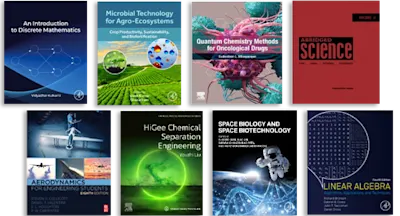
Aerosol Technology In Hazard Evaluation
- 1st Edition - November 13, 2012
- Latest edition
- Author: Thomas Mercer
- Language: English
Aerosol Technology in Hazard Evaluation is the fifth in the series of books on the subject of aerosol technology. This series is organized into nine chapters that cover the… Read more

Aerosol Technology in Hazard Evaluation is the fifth in the series of books on the subject of aerosol technology. This series is organized into nine chapters that cover the properties, sampling, and respirable activity of aerosol. After briefly describing the nature of an inhalation hazard, the book examines the properties, measurement, and significance of geometric diameters of aerosols, as well as the shape factors relating them to various particulate properties. The mathematical description of size distributions and the statistics of sampling from a lognormal distribution of particle sizes are provided. Considerable chapters deal with the methods of aerosol concentration measurement and geometric and aerodynamic size sampling. Operating characteristics of respirable aerosol activity samplers and their limitations are also examined. The concluding chapter discusses problems in the production, flow measurement, apparatus calibration, and isokinetic sampling of aerosols. This series will provide a convenient source of information to those concerned in industrial hygiene and will stimulate the interest of those involved in all phases of environmental health.
ForewordPreface1. Introduction 1-1 The Nature of an Inhalation Hazard 1-2 Sampling Procedures References2. Properties of Aerosols 2-1 Particle Dynamics 2-2 Properties Affecting Aerosol Stability 2-3 Optical Properties References3. Particle Size and Size Distribution 3-1 The Geometric Diameters of Nonspherical Particles 3-2 Geometric Shape Factors 3-3 Aerodynamic Shape Factors 3-4 Particle Size Distributions References4. Measurement of Concentration 4-1 Filtration 4-2 Electrostatic Precipitation 4-3 Optical Methods 4-4 Piezoelectric Microbalance Methods 4-5 Measurement of Number Concentration References5. Sampling for Geometric Size Measurement 5-1 Thermal Precipitation 5-2 Electrostatic Precipitation 5-3 Membrane Filters References6. Measurement of Aerodynamic Diameter 6-1 Air Elutriation 6-2 Aerosol Centrifuges 6-3 Impaction Methods References7. Measurement of Other Diameters Related to Particulate Properties 7-1 Optical Methods of Size Measurement 7-2 Electrical Methods of Size Measurement 7-3 Diffusion Measurements 7-4 Surface Area Measurements 7-5 Measurement of Particulate Volume References8. Respirable Activity Samplers Introduction 8-1 Definitions of Respirable Activity 8-2 Operating Characteristics of Respirable Activity Samplers 8-3 Some Limitations of Respirable Activity Samplers References9. Special Problems 9-1 Production of Test Aerosols 9-2 Flow Measurement 9-3 Calibration of Flow Meters 9-4 Isokinetic Sampling ReferencesGlossaryAuthor IndexSubject Index
- Edition: 1
- Latest edition
- Published: November 13, 2012
- Language: English
Read Aerosol Technology In Hazard Evaluation on ScienceDirect